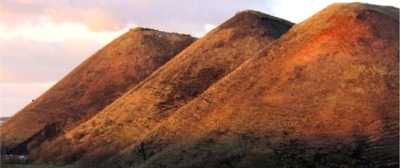I started reading Islands of Abandonment largely on the strength of its cover: a lopsided house sits in the water, with birds lined along the roof as if they very much belong there. This image perfectly encapsulates the book’s focus: when humanity moves out, nature moves back in. I had no expectations, yet I certainly wasn’t disappointed. This is a book about nature, with heavy doses of history and philosophy, all thoroughly researched and wrapped up in exquisite prose which wouldn’t look at all out of place in one of your flowerbeds.

I wasn’t aware of Cal Flyn when I began reading. She’s written one other book: what sounds like a fascinating biography of one of her ancestors, Thicker Than Water. I discovered about halfway through reading that she’s the deputy editor of the fantastic site Five Books, in which experts choose a selection of texts which fit a particular category. Turns out I’d actually read quite a few of her interviews, one of which I’ll refer to in a moment.
This is an encouraging book, by all accounts. Though Flyn gives a clear picture of the horrific natural damage that humanity’s actions has caused, particularly over the last few centuries, she draws attention to the natural world’s surprising resilience. Where the landscape has been ruined and whole ecosystems seriously disturbed or completely dismantled, Flyn points to the extensive evidence which shows life’s surprising habit of acclimatising and prevailing, from Chernobyl to urban Detroit, and all over the world.
Considering, the theme of abandonment, my mind first went to the ruined temples of Angkor Wat in Cambodia, which I visited about seven years ago. As you can see below, areas of the expansive temple complex have been overrun by trees. It was an image I found compelling at the time; humans had left the place, and nature was firmly laying claim to the land again.

In the book’s opening chapters, my eyes were opened to this natural phenomenon happening a lot closer to home. As somebody who has lived most of my life in Edinburgh, I regularly passed by the shale bings in West Calder and never stopped to question what they were. They look more like Ayres Rock than anything native to Scotland, or the planet Earth even. These red mountains are the products of oil production in the middle of the 20th century, but soon came to be considered a blight on the Lothian landscape. As Flyn articulately explains, nature is finding a foothold on the barren slopes nonetheless.

It’s ostensibly a book about nature, though it opens a doorway into so many areas of history. You can learn about the division of Cyprus as Flyn encounters the animals which have made their home in the buffer area which separates north and south. You can consider the environmental impact of the Mongol hordes and Columbus’ arrival on American shores. There’s agriculture in the Soviet Union, volcanoes in Monserrat, early industrialisation in the United States, and so on.
In spite of covering such a span of time and so many concepts, the book remains easily readable. The beautiful and floral language doesn’t get in the way of a detailed discussion of the science. The list of references stands testament to the extent of the research. The author visited most of the sites featured in the book, and her writing helps you to feel as if you were there too. I think this might be the only time I’ve heard the word “mordorian” used outside of Tolkien, yet it really conveys the devastation and barrenness of the landscape.
These issues around nature have proved to be a rich seam in fiction going back centuries, and fertile ground for science fiction in particular, as writers find themselves preoccupied with the way the disastrous treatment of the environment. Flyn references this phenomenon in the final chapter and makes various references throughout the book, from China Miéville’s The City & The City, to War of the Worlds, to Emily St. John Mandel’s Station Eleven, and many more besides.
For what it’s worth, my thoughts kept returning to Adrian Tchaikovsky’s Cage of Souls, which I think complements Islands of Abandonment well. This sci fi novel also explores the idea of what shape nature takes once humanity has shuffled off the stage, albeit in the far, far future. The world has been horrifically transformed, thanks to our exploits, yet nature changes shape to survive and even thrive in this toxic new world.
In an interview with Cal Flyn on Five Books, Tom Hunter refers to this event in Cage of Souls as a “slow apocalypse”: human civilisation is all but done, gradually being snuffed out, but the environment has other ideas.
Nature has been a theme in a lot of my January reading. Alan Moore’s Saga of the Swamp Thing features a protagonist coming to terms with his dual human and vegetable identity, while a villain teams up with the plant world to wipe out humanity in judgement upon it. In BBC Audio’s audio book/drama Forest 404, an event has taken place which has disconnected humanity from its history. Much has been lost or discarded, yet it is memories of the murdered natural world which come back to haunt the future. Meanwhile, in Kenneth Oppel’s Airborn trilogy, characters discover hitherto unknown ecosystems in the sky and even Winnie-the-Pooh fits the trend with its lush woodland setting.
Perhaps my subconscious reading choices are trying to push me in certain directions. Perhaps I would do well to better educate myself in the natural world and the problems confronting it, in which case Islands of Abandonment is a brilliant place to start. A lot of damage has been done, but there’s hope yet. Life will out.
Thank you to NetGalley for the ARC of this book, in exchange for an honest review!
